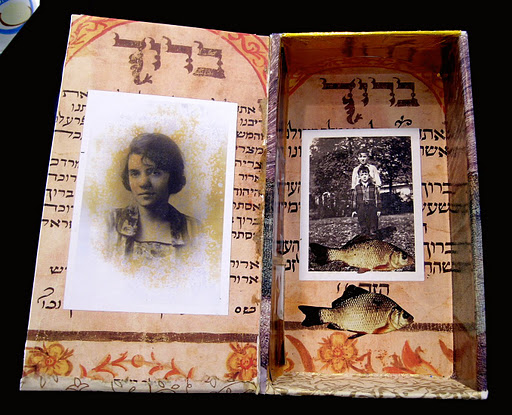Every so often, the worst thing imaginable happens. A woman's voice says in clear distinct tones: "Code Blue, Davis 7"
My heart skips a beat, waiting to hear the floor. "Please," I say inwardly, "not Davis 7." That's our floor, the kids' floor.
Code blue is called when a person's heart stops beating. Doctors, nurses, a pharmacist and a respiratory therapist are paged to do their best to revive the patient.
From the point of view of the people involved, it's a team effort. From the point of view of an observer, it is an otherworldly event. When it is successful, the rest of the day is spent picking up the pieces, literally and figuratively.
A code blue took place on our floor recently and by great good fortune, the patient was revived.
In this instance, as an art therapist, my role is strictly that of the picker upper, one of many who helps put the pieces back together for a family. In this case that meant working with one of the child's siblings, a ten year old girl.
I looked into my internal Mary Poppins bag of tools. What to do? What project would allow this child to process the swirl of emotions taking place inside of her and yet preserve her dignity, her anonymity? 
I came up with the "Inside Outside" box. It's a standard art therapy directive, using collage materials; magazine pictures, Mod Podge, buttons, gems, pipecleaners, stickers, feathers, small wooden tiles (everything but the kitchen sink.)
We spread these materials on a table along with small boxes. The idea behind the project is that you put images on the outside of the box that express the part of yourself that you feel comfortable showing the world, and on the inside you place those images and objects which are private; images that represent the parts of yourself you might share with family or friends, or perhaps no one.
I watched amazed as this girl took the small tiles, carefully wrote the name of each of her family members and added a colored gem to each tile. She then glued them to two sides of the box and added some feathers on the opposite sides. It looked very ceremonial, like some kind of memorial marker.
 Next, she turned her attention to the inside. I looked over as she was about to flick the contents of a brush heavily loaded with chartreuse green paint. "Whew!" I thought, "caught her before that went ALL OVER everything." Knowing she had a huge amount of emotion stored inside of her after the code, I taught her how to "point and flick." She spent the next half hour flicking every color of the acrylic palette into the box. I could not have imagined a more perfect way for her to express and capture her fear, helplessness and uncertainty.
Next, she turned her attention to the inside. I looked over as she was about to flick the contents of a brush heavily loaded with chartreuse green paint. "Whew!" I thought, "caught her before that went ALL OVER everything." Knowing she had a huge amount of emotion stored inside of her after the code, I taught her how to "point and flick." She spent the next half hour flicking every color of the acrylic palette into the box. I could not have imagined a more perfect way for her to express and capture her fear, helplessness and uncertainty.
That's the magic of art therapy. Behind a seemingly simple set of directions, lies an opportunity for a person's psyche in a pure, uninhibited yet protected way. (Provided these simple directions are supported by appropriate training in art therapy). It's one of those moments where all the study, hours of supervision, and my effort to keep faith in the process bears fruit.
Perhaps fruit isn't the right metaphor. I'm a Virgo, one of the most service oriented signs in the zodiac and I'm guided by the one of the tenets of my Jewish faith, "tikkun o'lam, " which means repairing the world. In a vulnerable moment like this one, peering into this small maelstrom of a box, I feel a piece of our world has been mended.
Pictured above is one of my first "Inside Outside" boxes made in 1999 during a class in medical art therapy. I call it "My Father's Box."
